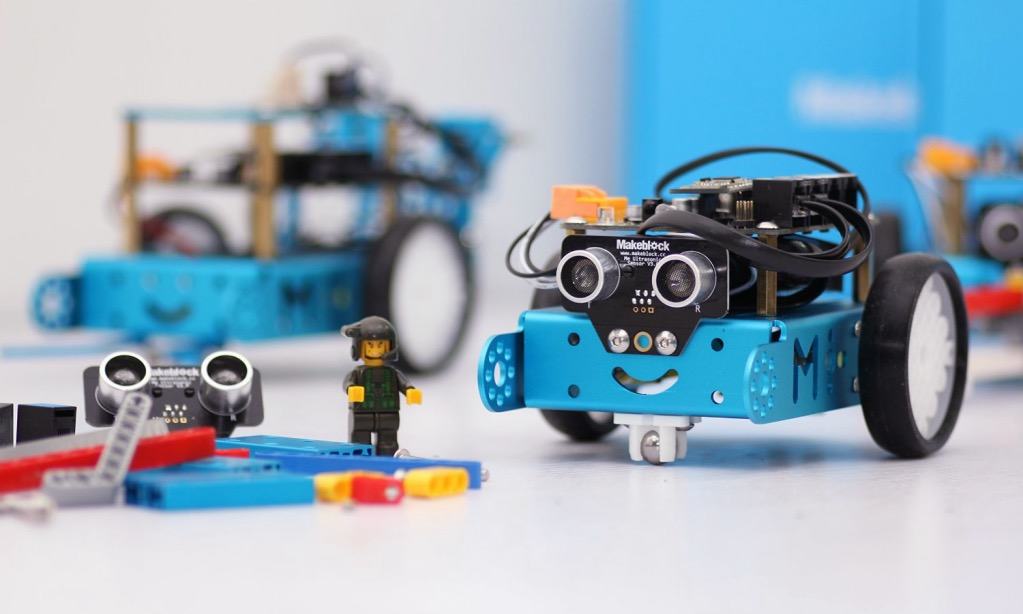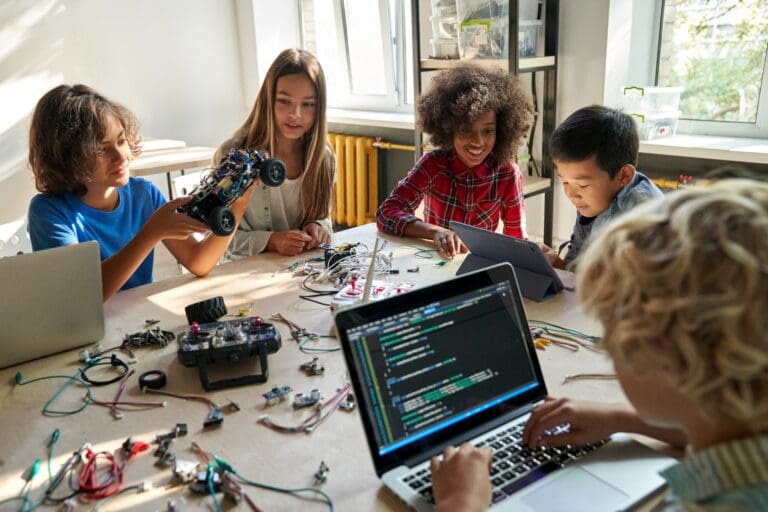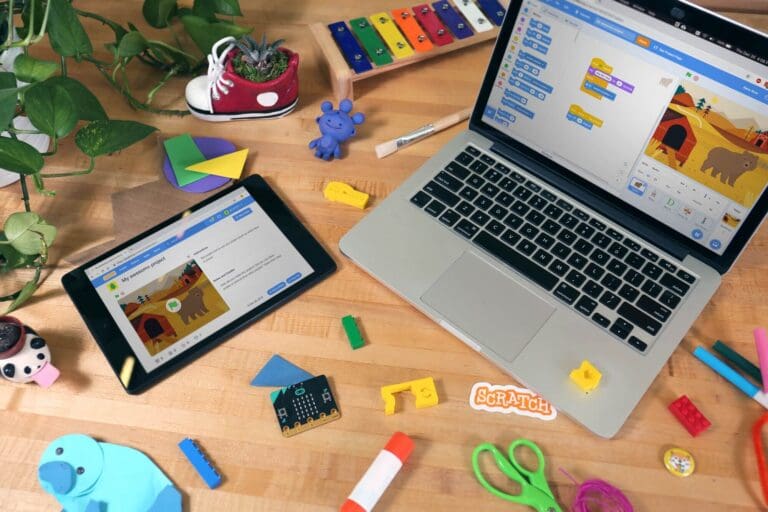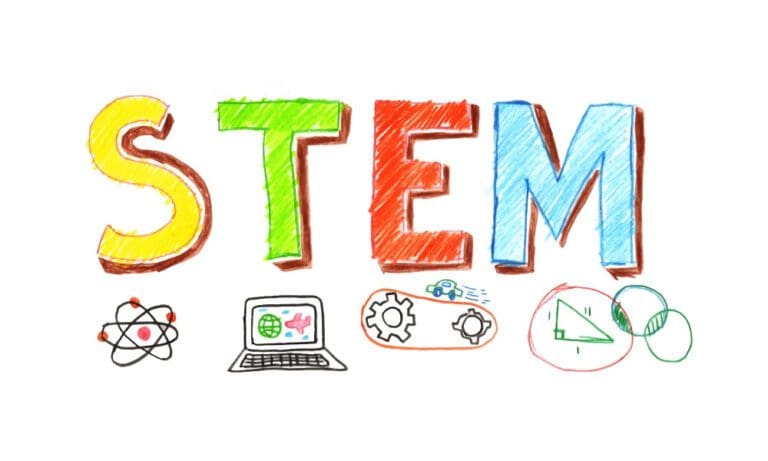Robotics for Kids: Inspiring the Next Generation of Innovators
Robotics for Kids is an exciting and educational way to introduce your child to the world of technology, engineering, and programming. By participating in robotics activities, your child will gain valuable skills that can help them excel in their future careers, solve problems, and think critically.
Various robot toys and kits are available that cater to different age groups, skill levels, and interests. Some kits emphasize creativity and building, while others focus on teaching the basics of programming and coding. Whatever your child’s interests, there is a robotics kit that can help foster their curiosity, encourage critical thinking, and provide hours of fun.
As you explore the world of robotics with your child, remember to provide support and encouragement and be prepared to learn alongside them. Engaging in robotics together can strengthen your bond and create lasting memories while imparting valuable skills that will serve them well throughout their lives.
Why Robotics for Kids
Future Job Prospects
Introducing your child to robotics can pave the way for a bright future, as it is a field with immense growth potential. By familiarizing them with different aspects of robotics at a young age, you can help them develop the skills necessary to excel in the ever-evolving job market. From engineers to software developers, the world of robotics offers various opportunities for a rewarding career.
Skill Development
Exposing your child to robotics allows them to learn about robots and develop important skills. Robotics encompasses various aspects of science, technology, engineering, and math (STEM), encouraging your child’s intellectual growth in multiple disciplines. Crucially, it fosters critical thinking, creativity, and problem-solving skills. Additionally, robotics drives an understanding of how different engineering disciplines come together in a single system.
Creativity and Problem-Solving
Robotics for kids can help nurture their creativity and problem-solving abilities. By learning how to code robot toys and undertake other exciting tasks, your child can learn to create innovative solutions while having fun. Furthermore, engaging in robotics activities may enhance their cognitive development, enabling them to apply their creativity and problem-solving skills in various real-life scenarios.
Types of Robotic Kits
When looking for robotics kits for kids, there are various options to consider based on their interests and learning goals. In this section, you will learn about two popular types of robotic kits: Educational Kits and DIY Kits.
Educational Kits
Educational kits are designed to introduce children to robotics and STEM subjects in a fun and engaging way. These kits often include pre-programmed robots, sensors, and other components to help kids understand basic concepts such as programming, mechanics, and electronics.
Popular educational kits like LEGO Mindstorms and the Ubtech Jimu Robot AstroBot Series come with step-by-step instructions to guide kids through the building and coding process. With various difficulty levels and modular designs, these kits provide a scalable learning experience for beginners.
DIY Kits
DIY (Do-It-Yourself) kits offer a more hands-on experience, allowing kids to explore robotics by building their custom robots from scratch. These kits usually include motors, sensors, and other electronic components, requiring kids to assemble and program the robot using their creativity and problem-solving skills.
One notable DIY kit is the Sillbird 12-in-1 Solar Robot Toy, which allows kids to build 12 different solar-powered robots. This kit encourages experimentation and learning about renewable energy sources.
As you explore the various robotic kits available, consider your child’s interests and skill level, and choose the type of kit that best suits their needs. Educational kits provide a more guided experience, while DIY kits inspire creativity and independent problem-solving.
Popular Robotics for Kids Platforms
With advancements in technology, robotics has become a fun and educational tool for kids. This section will discuss two popular robotics platforms for kids: LEGO Mindstorms and VEX Robotics.
LEGO Mindstorms
LEGO Mindstorms is a popular robotics platform for kids learning programming and robotics concepts. It combines traditional LEGO building blocks with motors, sensors, and an intelligent programmable brick.
With LEGO Mindstorms, your kids can build various robotic models and program their behavior using an intuitive graphical interface called EV3. The platform encourages creativity and problem-solving skills while making learning fun and engaging. To get started, you can purchase a LEGO Mindstorms kit which includes everything needed to build and program robots.
VEX Robotics
VEX Robotics is another excellent platform for kids to explore the world of robotics. Designed for students of all ages, VEX offers various robotics kits and components to create custom-designed robots.
Your kids can learn critical STEM skills through the VEX platform, including coding, engineering, and design. VEX uses a programming language called RobotC, which is close to real-world languages like C++, making it an excellent foundation for future programming and robotics studies.
Both VEX and LEGO Mindstorms participate in popular robotics competitions, such as the First LEGO League and VEX Robotics Competition, allowing your kids to showcase their skills and learn from other students.
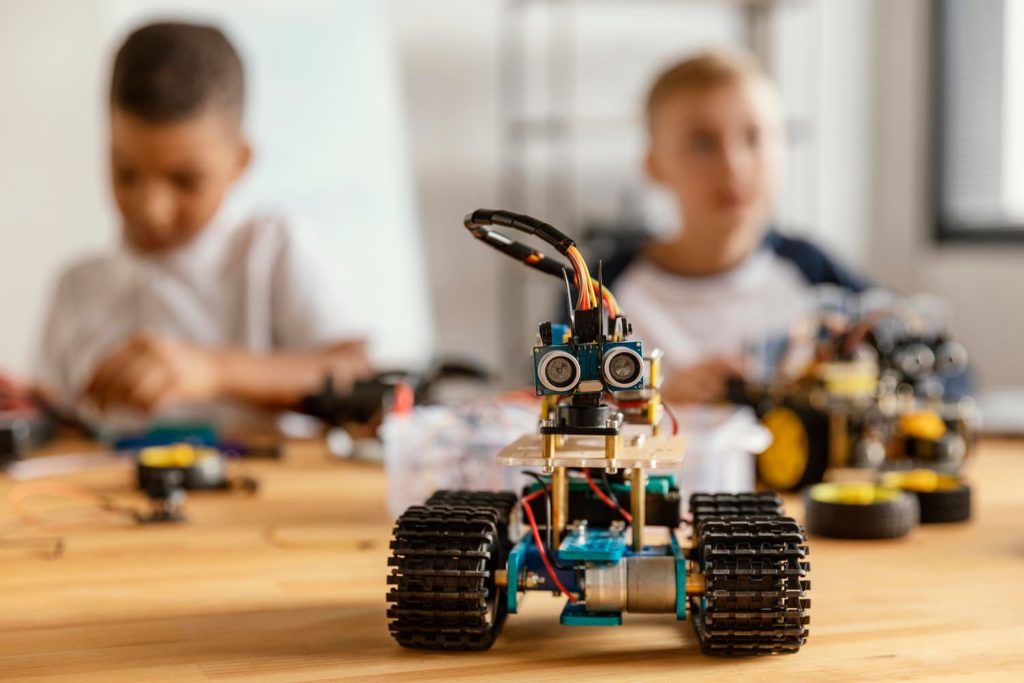
Robotics Coding Languages
In this rapidly evolving world of robotics, it’s essential for kids to learn about various programming languages that can be used in robotics. In this section, we’ll discuss two popular coding languages for kids: Scratch and Python.
Scratch
Scratch is a beginner-friendly, block-based programming language designed for kids as young as 8 years old. It’s a fantastic way to introduce your child to coding and robotics concepts without overwhelming them with complex syntax. Scratch allows them to create interactive stories, games, and animations, which can later be applied to robotics projects.
With Scratch, kids can simply drag and drop code blocks to create scripts for their projects. As they progress, they’ll learn about loops, conditionals, and variables, which are fundamental concepts in robotics programming. The visual nature of Scratch helps them understand the logic behind the code and empowers them to experiment and learn by doing. Find out more about Scratch here.
Python
Python is another popular coding language for robotics, primarily due to its relevance in machine learning and artificial intelligence. It’s suitable for kids who have already grasped the basics of coding and are looking to explore more advanced robotics programming. Python is known for its readability and ease of use, making it an excellent choice for kids to transition from block-based coding to a text-based language.
Python is widely used in robotics for tasks like computer vision, automation, and controlling hardware. Along with the standard built-in libraries, countless external packages are available to help them create advanced robotics projects efficiently.
Introducing your child to these coding languages will equip them with the necessary skills and knowledge they need to excel in the world of robotics. Remember to be patient and support their learning journey; mastering these languages takes time and practice.
Robotics Competitions for Kids
Engaging your child in robotics competitions can greatly enhance their learning experience and foster valuable skills. This section will explore two popular robotics competitions for kids: FIRST LEGO League and RoboCup Junior.
FIRST LEGO League
The FIRST LEGO League is a renowned competition that combines robotics with LEGO building elements. It is designed for children aged 9 to 16 and is focused on promoting teamwork, problem-solving, and creativity.
Participants work together in small groups to design, build, and program autonomous LEGO robots. They must then navigate these robots through a series of challenges based on real-world scenarios. In addition to the robotics challenge, teams are also required to research a related topic and showcase their findings at the competition.
Some benefits your child can gain from FIRST LEGO League include:
- Improved teamwork skills
- Enhanced critical thinking abilities
- Greater understanding of robotics and programming concepts
RoboCup Junior
RoboCup Junior is an international robotics competition open to students up to 19 years old. The event is divided into three main categories: Soccer, Rescue, and OnStage.
In the Soccer category, teams build robots capable of playing soccer by detecting and interacting with a ball. In the Rescue category, robots are designed to navigate a simulated disaster scenario, identifying and saving victims. OnStage encourages creative performances where robots and humans collaborate.
Participating in RoboCup Junior can provide numerous benefits for your child, such as:
- Increased interest in STEM subjects
- Development of programming and engineering skills
- Experience working on interdisciplinary projects
Encouraging your child to participate in these robotics competitions can be an excellent way for them to have fun while learning valuable skills that will serve them well in the future.
How to Get Started
If you want to introduce your child to robotics, there are various ways to initiate their learning journey.
Local Workshops
Enrolling your child in local workshops or after-school programs can provide them with hands-on experience in robotics. Many communities offer clubs or camps dedicated to robotics, teaching kids basic concepts and giving them opportunities to work on projects. You can also consider a robotics summer camp where young learners get a chance to collaborate with like-minded peers and experiment with building and programming robots.
Online Resources
A wealth of online resources makes it easy to learn robotics from the comfort of your home. Consider introducing your child to coding and programming concepts through educational games or apps, like the iRobot coding app.
For more advanced learning, step-by-step guides and tutorials are available for building and programming robots using Arduino. Students can follow How to Use Arduino videos or build an Arduino robot with the Science Buddies Bluebot Kit.
Additionally, you can explore robotics courses tailored for various age groups, which cover specialized topics and expand on electronics concepts.
Remember, the key to helping your child excel in robotics is to support their curiosity and provide resources matching their interests and skill level. As they develop a strong foundation in robotics, they’ll grow to learn more advanced concepts and embrace the challenges of this fascinating field.
Conclusion
As you can see, robotics for kids offers numerous benefits to their educational experience. Learning robotics at a young age can help children develop essential problem-solving skills and a strong foundation in STEM fields. Robotics courses and kits are designed to make learning fun and engaging, providing practical, hands-on experience in building and programming robots.
Furthermore, educational robotics sparks interest in technology and engineering and brings countless opportunities for educational and career advancements. Introducing your child to robotics opens the doors to a future filled with innovation and creativity.
With a variety of robotics kits available on the market, you can easily find one that suits your child’s age and interests. So, take a step towards empowering your child with the knowledge and skills needed for the technologically-driven world of tomorrow by getting them started in the exciting field of robotics.
FAQ
What is robotics for kids?
Robotics for kids is a field of study that exposes children to science, technology, engineering, and mathematics (STEM) in a fun and engaging way through building and programming robots. Kids can learn valuable life skills like problem-solving, creativity, and teamwork while working with robots.
What age should kids start robotics?
There is no set age for kids to start robotics, but introducing them to the basics as early as age 6 can be beneficial. They can explore more advanced concepts and work with robots at progressively complex levels as their skills develop.
How can kids learn robotics?
Kids can learn robotics through various methods, such as:
- Robotics classes or workshops in schools, locally or online
- Online tutorials and courses
- Robotic kits that can be assembled and programmed at home
- Building fun robots from recycled materials, as suggested by Science Buddies Blog
Why do kids need robotics?
Robotics can help kids develop essential skills such as critical thinking, creativity, and problem-solving. Exposure to robotics can also spark an interest in STEM fields, setting kids on a potential career path in technology and engineering.
What can robots do for kids?
Robots can provide kids with a hands-on learning experience and introduce them to various STEM concepts. They can also teach kids how to code, create innovative solutions, and improve fine motor skills by assembling and manipulating robot components.
What are the benefits of robots?
Some of the benefits of working with robots for kids include:
- Enhanced problem-solving skills
- Improved critical thinking abilities
- Increased creativity and innovation
- Development of fine motor skills
- Better teamwork and communication among peers, as noted by Anki Cozmo Robot

